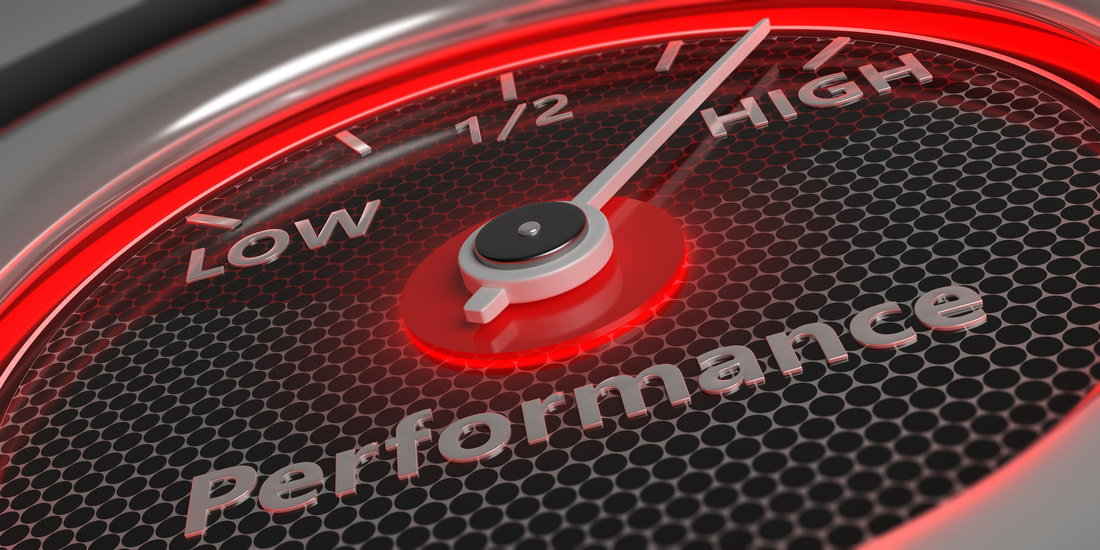|
Introduction
A recent conversation with a client prompted this article about two topics that deserve the attention of every business. Cybersecurity and performance in IT are two distinct aspects of an organization's IT infrastructure. The distinction and their interrelationship are important, as are the strategies for meeting goals. While both involve protecting the security of digital assets, they differ in how they protect them. Cybersecurity focuses on using software, hardware, and processes to protect against threats while performance focuses on measuring and optimizing the speed and reliability of IT systems. Performance is important for ensuring a satisfactory user experience whereas cybersecurity is needed to protect confidential data from potential attackers. Both elements are necessary for any successful IT system. As a small business owner, protecting your digital assets and optimizing IT performance are essential components of success. Business owners often overlook what is at stake when these two areas are not managed correctly. Cyber threats, data breaches, and other IT issues can have a devastating effect on your business and its reputation. Cybersecurity and performance in IT are both very important for any business. They help protect the business's data from people who might try to steal it, and they make sure that using the IT system is fast and reliable. Both cybersecurity and performance in IT help make sure that your IT system works well so you can do what you need to do. Without proper cybersecurity and IT performance, small businesses face a number of serious risks. These include data breaches, malware attacks, system downtime, and financial loss.
By focusing on performance and cybersecurity, small businesses can ensure that their IT systems are secure and running as efficiently as possible. We recommend clients establish a security framework that suits their unique needs, which outlines the measures that need to be taken to protect IT systems from potential threats. This should include policies and procedures for user authentication, data access control, incident response, and encryption. What is Cybersecurity? Cybersecurity is a shield, comprised of software, hardware and processes that allows us to protect our digital assets from intruders with malicious intentions. It ensures that data stays secure and away from the grasp of those trying to gain unauthorized access. Cybersecurity safeguards your virtual property so it can never be taken without permission! (Performance in IT, on the other hand, is an umbrella term for all the processes that ensure your system runs efficiently and adequately. It’s about optimizing speed and reliability so that users have a good experience when interacting with your system. Both elements are essential for keeping your IT infrastructure secure from intruders and running smoothly for users.) One of the most important keys to meeting cybersecurity requirements to satisfy insurance protection is having a comprehensive security framework in place. This framework should include policies and procedures that outline measures for user authentication, data access control, incident response, and encryption. Having this framework in place will ensure that your IT system is secure from potential threats and that you are able to meet the criteria for insurance coverage. Additionally, regular system audits and maintenance should be conducted to ensure that any potential weaknesses or vulnerabilities in your IT system are identified and addressed. This will help to keep your system running efficiently, as well as help you maintain the necessary cybersecurity standards for insurance coverage. Maximizing Cybersecurity Protection Cybersecurity measures require year-round, full-time vigilance and best practices to ensure maximum protection and minimal risks to a business. The most effective way to protect your digital assets is to adopt a layered approach that combines multiple layers of security. This includes utilizing strong passwords, creating backups, and regularly updating software, monitoring for suspicious activities and deploying encryption technologies. It also means implementing access control policies as well as firewalls and other network security measures. Additionally, educating your employees on cybersecurity, as well as email security best practices. Our advice for ensuring your best protection is always worthy of repeating. We recommend that every small business: 1. Establish a Strong Password Policy: A strong password policy is the foundation for any effective cybersecurity strategy. Passwords should be complex, with at least eight characters in length and include a mix of letters, numbers, and special characters. Businesses should also require employees to regularly change their passwords and prohibit the use of shared or reused passwords. This includes leadership, as cybersecurity starts at the top! 2. Install and Regularly Update Security Software: One of the most effective ways to protect your digital assets is by installing and regularly updating anti-virus software, firewalls, and other security systems. This will help prevent malicious software (malware) from infiltrating your system and stealing confidential information. 3. Monitor for Suspicious Activity: Regularly monitoring your system for suspicious activity and responding quickly to potential threats is key. This includes regularly checking logs, as well as running scans and vulnerability tests. 4. Deploy Encryption Technologies: Data encryption is one of the most effective ways to protect your digital assets. Encrypting confidential data ensures that only authorized users can access it, and that no one can read or steal the data in transit. 5. Establish Access Control Policies: Implementing an effective access control policy is also essential for protecting your digital assets. This typically involves granting users varying levels of access depending on their job role and responsibilities. 6. Educate Employees: Lastly, educating your employees on cybersecurity and email security best practices is essential for protecting your digital assets. This includes topics such as password strength and the importance of not clicking on suspicious links or attachments. AT CTS Services, cybersecurity vigilance is something we try to instill in every client we serve. Protecting your digital assets is an ongoing process that requires regular attention and monitoring to ensure maximum protection. By following these above six steps, you can rest assured that your digital assets are safe and secure. What is IT Performance? Accurately gauging the velocity and reliability of IT systems is essential for any business, as these metrics allow them to assess how their technological infrastructure performs. To maximize speed and dependability, various methods can be used such as expediting processes, preparing backups, and utilizing top-notch hardware. IT performance is usually evaluated based on response time, scalability, availability, trustworthiness, or a combination thereof. When it comes to assessing an IT system's effectiveness, response time reveals how quickly a task is accomplished; reliability exemplifies the constancy of results over prolonged usage; scalability gauges whether rising requests can be fulfilled without compromising performance; and availability evaluates the system's up-time. By monitoring these metrics, you will gain valuable insight into if your IT infrastructure is reaching its objectives. The top indicators that IT performance may be less than optimal include slow response times, inconsistent reliability, limited scalability, and low availability. Slow response times indicate that an IT system is unable to process requests in a timely manner, causing delays in user experience. Inconsistent reliability means the system is not performing at its expected level of consistency over time. Limited scalability means an IT system cannot handle increasing demands without degrading its performance. Low availability suggests that users are unable to access the system when they need it most due to technical issues or other disruptions. 1. Upgrade Network Equipment: Installing new and reliable hardware such as routers, switches, and firewalls can help boost network performance. 2. Implement Quality of Service (QoS): QoS provides a way to prioritize certain types of traffic over others on your network for better performance. 3. Utilize Cache Servers: Setting up cache servers helps reduce the number of requests that need to be sent directly from the client side to the server—speeding up response times in the process. 4. Run Stress Tests: Regularly running stress tests can help identify any potential bottlenecks or weak links in your IT infrastructure before they cause serious disruptions. 5. Reevaluate the Network Architecture: Evaluating how well each part of your network architecture communicates with one another and making adjustments as needed can improve overall performance. By following these five steps and taking advantage of the latest technology, you can guarantee better IT performance for your business. It’s important to remember that IT performance should be monitored on an ongoing basis and adjustments should be made when necessary to ensure your IT infrastructure is running efficiently. Protecting your digital assets also requires vigilance and dedication, so it’s important to stay abreast of the latest cyberthreats and maintain a secure online environment by avoiding malicious links and software. With the right approach, your digital assets can remain safe and secure. To further protect yourself, consider investing in robust IT solutions such as managed services, cybersecurity software, and regular security assessments. Doing so will ensure that your data is safe and secure while also enhancing the performance of your IT infrastructure. By following these tips, you can be sure that your business’s digital assets are adequately protected from cyberthreats, and its IT system performs at an optimal level. Ultimately, these measures will help you get the most out of your IT infrastructure while also ensuring that its performance remains consistent over time. Regularly monitoring and tweaking your IT system is key to achieving reliable performance, so use the above tips to ensure your business’s digital assets remain safe and secure! Conclusion IT performance is integral for any business, and failure to monitor it can lead to disruption in user experience. This is equally true for a sound cybersecurity strategy. To ensure that your IT infrastructure meets its security and performance objectives, you must closely evaluate your protection measures, the response time, reliability, scalability and availability of the system. If these metrics are not up-to-par, take steps to expedite processes or invest in better hardware as soon as possible. At CTS Services we make sure our clients understand the importance of monitoring their IT performance so they receive only top quality service from their network assets throughout their enterprise - however large or small - without interruption. Having an experienced IT partner to manage your digital assetswill also ensure that your systems are secure and running optimally. Working with a knowledgeable provider who understands the ins and outs of cybersecurity and performance in IT can help to ensure that your system is running smoothly, securely, and efficiently. Ultimately, by focusing on both cybersecurity and performance measures together, businesses can guarantee a secure and optimal experience for their users. In a technology advisory review, which also considers business factors, we examine cybersecurity and IT performance with the goal of an assessment of current technology and policy recommendations. If you are ready to schedule a technology review, please visit https://www.ctsservices.com/techreview or call us at 508-528-7720 Comments are closed.
|
AuthorOur blog posts are written by several members of our team. Please contact us if a particular post or topic is of further interest. We're here to help keep your business up and running. Archives
December 2023
Categories |
Services |
|
CTS Services, Inc. 260 Maple Street, Bellingham, MA 02019 Phone 508-528-7720 Fax: 508-966-9734


 RSS Feed
RSS Feed
